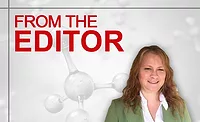Adhesives and Sealants in Support of the European Green Deal
FEICA, the Association of the European Adhesive and Sealant Industry, shares details regarding the continent’s sustainability goals and the role played by the adhesive and sealant industry.

The European Union (EU) has taken global leadership in tackling climate change and actively pursues policies to cut its greenhouse gas emissions and to decouple these from economic growth. This allows the EU to modernize its economy and energy system, making them sustainable in the long term, and to improve energy security and the health of its citizens by reduced air pollution.
In this context, European Commission President Ursula von der Leyen presented the European Green Deal on December 11, 2019, stating, “We can all be involved in the transition and we can all benefit from the opportunities. We will help our economy to be a global leader by moving first and moving fast. We are determined to succeed for the sake of this planet and life on it—for Europe’s natural heritage, for biodiversity, for our forests and our seas. By showing the rest of the world how to be sustainable and competitive, we can convince other countries to move with us.”1
The overriding objective is to achieve a climate-neutral Europe by 2050. The Green Deal aims to align all EU policies with the 2050 climate neutrality objective, with a plan that includes action on:
- Developing a new circular economy plan
- Renovating more buildings, doubling or tripling the renovation rate
- Reaching a “pollution-free” environment by 2050
- Developing a new ecosystem and biodiversity strategy
- Developing a new farm-to-fork strategy
- Working toward zero emissions for vehicle transport
- Developing a financial strategy to assist the most vulnerable regions and sectors
- Boosting R&D and innovation, particularly for climate-friendly technologies
- External relations activities to encourage the rest of the world to take action
Of course, the COVID-19 pandemic may have an impact on the timing of the plan. However, the EU remains committed to its goal of a climate-neutral Europe by 2050.
Adhesive and Sealant Industry in Europe
In Europe, the adhesive and sealant industry supports the objectives of the European Green Deal by providing recognized expertise, technological know-how, regulatory insights, concrete manufacturing innovations, and solutions and services to support the EU’s sustainability ambition. To maximize the benefit of this knowledge, we collaborate with diverse industry players across various business sectors. In this way, we play a role in shifting whole value chains toward a more sustainable future.
The adhesives and sealant industry invests heavily in science, research, and innovation to advance solutions that tangibly reduce environmental impact and empower manufacturers to produce in a more cost-effective and responsible way. In this way, we help enable the Circular Economy Action Plan and lay the practical foundations of a new era of industrial design and manufacturing under resource constraints. The need to responsibly leverage chemicals—as research evolves and markets grow—and use them safely are strong prerequisites for sustainable innovation, eco-design, and ultimately, the EU Green Deal agenda.
To help stimulate innovation and interactions between industrial and scientific activities in adhesion science, FEICA, together with EURADH (the biannual European conference on adhesion and related phenomena), organizes and sponsors the Adhesive Innovation Award. One of the three criteria for judging the projects submitted is the “relevance of the work, highlighting benefits to the circular economy, society, economy, sustainability, environment and/or industry.”2
Sustainability Benefits
Adhesives and sealants can help achieve efficiencies, materials savings, and carbon dioxide (CO2) emission reductions in a broad range of applications. Since our technologies make the sustainability benefits of next-generation goods possible, the value proposition of the adhesive and sealant industry is an integral part of many global value chains. The following examples from our daily lives represent just a fraction of those surrounding each and every one of us.
Durability
- An impregnated sealant tape for joints fulfills the aesthetic and qualitative requirements to protect sensitive materials such as sandstone in historical buildings.
- Special adhesive solutions enable the production of lightweight panels, contributing to the increased stability and durability of lightweight furniture.
- Heat seals and re-closable packaging improve the conservation of food, reducing food waste and packaging waste.
Recycling
- Labeling adhesives that can be easily washed off support multiple use and the recycling of returnable glass bottles.
- An adhesive with barrier properties enables flexible food and consumer packaging to be recycled thanks to the use of mono-material films.
- Special adhesives are also used in the electronics industry that enable de-bonding of components in electronic devices to enable their reuse and recycling.
Energy savings
- The performance of window systems can be dramatically improved through the use of the appropriate sealants and adhesives to seal and bond the glass in the window frame, seal the window in the building, and seal and bond the glass panes in the insulating windows.
- Adhesives enable wooden structural elements for innovative construction technologies, thus saving energy and reducing CO2 emissions through the use of renewable and recyclable materials.
- Adhesives securely bond insulation panels as part of external thermal insulation composite systems (ETICS), helping save energy and reduce the need for maintenance in buildings.
Material Efficiency
- New adhesive systems for high-performance structural glazing in building facades can save material during production and energy in the use phase. At the same, they allow more innovative facade designs.
- Adhesives used in the manufacture of composites for lightweight automotive materials and airplane components enable the production of lighter vehicles and airplanes, reducing CO2 emissions and improving their fuel economy.
- Paper glues based on natural ingredients and packed in mainly plant-based packaging help to reduce CO2 emissions and save fossil resources.
Repairability
- Adhesives are used for the repair of items such as shoes, furniture, toys, crockery, and clothing, extending their use phase.
- The longevity of conveyor belts can be extended by repairing them on-site with a special adhesive system, thereby saving resources and reducing downtime.
- Sealants are used to repair buildings, hermetically protecting facades against the penetration of water.
Trusted Partners
The EU will continue to lead international efforts and use its influence, expertise, and financial resources to mobilize its neighbors and partners to join it on a sustainable path. The adhesive and sealant industry is committed to being a trusted partner in this journey.
With a strong commitment to its sustainability vision, the adhesive and sealant industry is a key enabler of the European Green Deal and the circular economy. We are an integral component of the solution in Europe and are determined to live up to the ambition, continue the dialogue, and make it happen for the people, the planet, and the industry.
For more information, email info@feica.eu or visit www.feica.eu.
References
- “The European Green Deal sets out how to make Europe the first climate-neutral continent by 2050, boosting the economy, improving people's health and quality of life, caring for nature, and leaving no one behind,” European Commission, December 11, 2019, https://ec.europa.eu/commission/presscorner/detail/e%20n/ip_19_6691.
- Adhesive Innovation Award, www.adhesionaward.org.
Looking for a reprint of this article?
From high-res PDFs to custom plaques, order your copy today!






